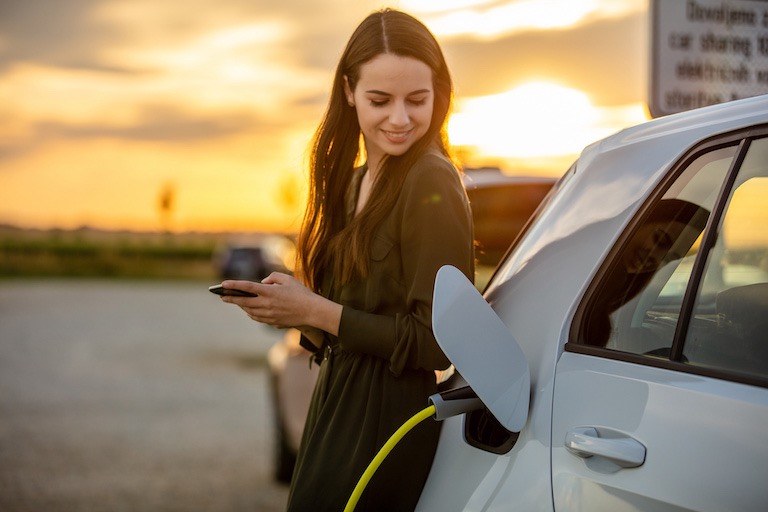
Industry welcomes California’s 2035 combustion car ban
Key US state follows Europe and ACT in banning new petrol, diesel and hybrid cars and light commercials in 13 yearsTop car-makers have welcomed California’s move to ban the sale of new internal combustion engine (ICE) powered cars and light commercial vehicles from 2035.
The US state with the biggest economy, which would rank it as the world’s fifth largest behind Germany, will not only match Europe’s ICE ban in as few as 13 years, but will require a third of new vehicle sales to be battery-electric (EV), plug-in hybrid (PHEV) or hydrogen fuel-cell (FCEV) by 2026.
That required share will rise to 51 per cent in 2028 and then 68 per cent by 2030 (more than the Biden government’s 50 per cent mandate by the same year), before the full ban comes into effect in the middle of the next decade.

The bulk of those proportions must be contributed by EVs and FCEVs due to their lack of greenhouse gas emissions, while PHEVs can only account for a maximum of 20 per cent given they still emit CO2.
California has some of the most ambitious CO2 emissions targets of any US state and indeed the world, including an ultimate goal of reducing the 1990 level of greenhouse gas emissions by 80 per cent before 2050.
The state has been a leader on this front since the 1960s, when it was given permission by congress to set its own emissions targets and regulations, which is why it’s become something of a flagbearer with more than a dozen neighbouring states typically following its lead.

This latest development therefore has the potential to trigger a tidal wave of similar bans across western America, which would more than likely make its way east, forcing the entire global auto industry to accelerate its electrification rollout.
Despite that, major car-makers including Ford and Honda have voiced their support of the California ICE ban, while Toyota has back-pedalled on it previous opposition and found a silver lining.

Ford chief sustainability officer Bob Holycross declared the California ruling a “landmark standard” that would “define clean transportation and set an example for the United States”.
“At Ford, combatting climate change is a strategic priority, and we’re proud of our partnership with California for stronger vehicle emissions standards, forged during a time when climate action was under attack,” he said.
“We’re committed to building a zero-emissions transportation future that includes everyone, backed by our own investments of more than $50 billion by 2026 in EVs and batteries.”

American Honda Motor Company meanwhile described the future requirements as an ambitious but important milestone in the evolution clean mobility and said reaching the targets would require thoughtful collaboration between all relevant parties.
“Today’s action by California makes it more important than ever for policymakers to enact complimentary policies that will accelerate – not decelerate – the adoption of electric vehicles,” said Honda.
“Honda has a long history of working alongside the state of California, and we look forward to continued collaboration with the state and other stakeholders on the best ways to achieve our shared climate goals.”

Toyota meanwhile said it was looking forward to working with the relevant parties in extending its ‘Clean Ports, Clean Corridors and Clean Communities’ initiative.
According to a report by the Los Angeles Times, manufacturers could be slapped with a $20,000 fine for each non-compliant vehicle, although Californian consumers still wanting to purchase an ICE vehicle after 2035 could theoretically buy one from a neighbouring state without such a ban.
This isn’t some far-off saga happening on the other side of the world by the way; the Australian Capital Territory government announced in July that it too would ban the sale of ICE vehicles as of 2035, setting an extreme precedent for other Australian states and territories as the federal government reviews new-vehicle CO2 emissions standards and develops a ‘National Electric Vehicle Strategy’.
Related: National EV plan could lead to cheaper electric cars
Related: Industry reacts to Canberra’s 2035 petrol and diesel car ban
Related: Lowest and highest CO2-emitting auto brands revealed
Related: US targets 50 per cent EV sales by 2030
Related: Europe to ban new petrol, diesel and hybrid cars from 2035
For everything you auto know about EVs, listen to carsales' Watts Under the Bonnet: the electric car podcast
Join the conversation at
Or email us at
Or email us at


Please see our Editorial Guidelines & Code of Ethics (including for more information about sponsored content and paid events). The information published on this website is of a general nature only and doesn’t consider your particular circumstances or needs.














